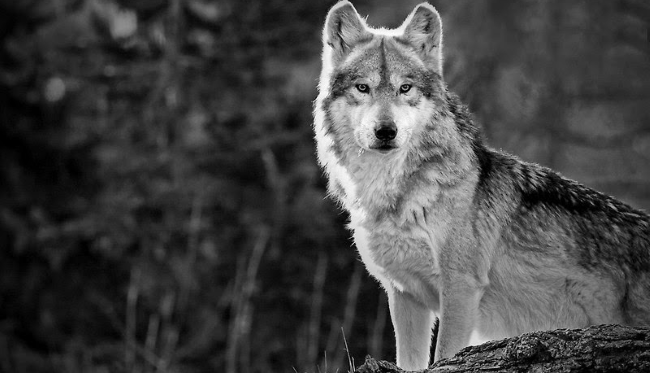In the vast wilderness, few animals command as much respect and fascination as the wolf. These magnificent creatures have survived millennia through their unwavering loyalty and sophisticated social structures.
The wolf pack operates as a masterclass in loyalty, teamwork, and dedication—principles that transcend the animal kingdom and offer profound lessons for human relationships, leadership, and personal development. By observing wolves in their natural habitat, we discover timeless wisdom about commitment, trust, and the power of belonging that can transform how we approach our own lives and communities.
🐺 The Pack Mentality: Understanding Wolf Social Structure
Wolves live in highly organized family units known as packs, typically consisting of five to ten members. At the heart of this structure lies an intricate web of relationships built on unwavering loyalty and mutual dependence. Unlike popular misconceptions about aggressive alpha dominance, wolf packs actually function more like human families, with experienced parents guiding younger members.
The breeding pair, often mischaracterized as “alphas,” leads through experience and wisdom rather than brute force. Their offspring remain with the pack for several years, learning essential survival skills and contributing to the group’s success. This family-based model demonstrates that true loyalty emerges from bonds of care and shared purpose rather than fear or coercion.
Each pack member plays a vital role in the collective survival. Hunters, caregivers, scouts, and guardians all contribute their unique strengths, creating a resilient and adaptive unit. This interdependence teaches us that loyalty flourishes when individuals recognize their value within a larger purpose and understand that their well-being is interconnected with others.
Lessons in Unwavering Commitment
Perhaps no aspect of wolf behavior illustrates loyalty more powerfully than their lifelong mating bonds. Wolves typically mate for life, demonstrating a level of commitment that puts many human relationships to shame. This monogamous partnership extends beyond reproduction to encompass shared responsibilities in raising pups, defending territory, and providing for the pack.
When one mate is injured or ill, the other remains steadfastly by their side, sometimes sacrificing hunting opportunities to provide care and protection. This devotion reveals an essential truth about loyalty: it’s not merely a fair-weather virtue but a commitment that deepens during hardship and adversity.
Standing by the Vulnerable
Wolves demonstrate extraordinary care for their young, elderly, and injured pack members. When a wolf becomes sick or wounded, the pack adjusts its pace and activities to accommodate the struggling member. They’ve been observed bringing food to those unable to hunt and defending vulnerable individuals from external threats.
This protective instinct extends to the pups, with all pack members participating in their care and education. While the parents provide primary care, siblings, aunts, and uncles also contribute to feeding, playing with, and teaching the young wolves. This collective investment in the next generation ensures the pack’s continuity and strength.
Communication: The Foundation of Trust
Loyalty cannot exist without effective communication, and wolves are masters of multi-layered dialogue. They employ an sophisticated combination of vocalizations, body language, and scent marking to maintain pack cohesion and coordinate activities.
The iconic wolf howl serves multiple purposes beyond its haunting beauty. Pack members use howls to locate each other across vast distances, coordinate hunting strategies, and reinforce social bonds. These vocal exchanges create a sense of togetherness and belonging that strengthens loyalty even when pack members are physically separated.
Body language provides equally important communication channels. Tail position, ear orientation, facial expressions, and posture convey a wolf’s intentions, emotional state, and social standing. This transparent communication system minimizes misunderstandings and conflicts, creating an environment where trust can flourish.
The Power of Presence
Wolves spend significant time engaged in social bonding activities that reinforce pack loyalty. They sleep together for warmth and security, play to strengthen relationships, and engage in mutual grooming to demonstrate affection and maintain social hierarchies peacefully.
These seemingly simple interactions reveal that loyalty requires ongoing investment. The wolves teach us that maintaining strong relationships demands consistent presence, attention, and effort—not just during crises but throughout the mundane rhythms of daily life.
Hunting Together: Loyalty in Action 🎯
The wolf pack’s hunting strategies provide perhaps the most dramatic demonstration of loyalty translated into coordinated action. Successfully bringing down prey much larger than any individual wolf requires absolute trust, precise communication, and unwavering commitment to the collective goal.
During a hunt, each wolf assumes a specific role based on their strengths and experience. Some wolves drive the prey, others cut off escape routes, while still others wait in ambush positions. This division of labor only succeeds when every pack member trusts others to fulfill their responsibilities.
The meal distribution following a successful hunt further illustrates wolf loyalty. Contrary to “survival of the fittest” stereotypes, wolves follow established protocols that ensure even the weakest pack members receive nourishment. The breeding pair typically eats first, followed by other adults, with pups eating last but guaranteed their share. Injured or nursing wolves receive priority access to ensure their recovery and the pack’s future.
Territory Defense and Collective Security
Wolves are fiercely territorial, defending their home ranges against rival packs and other predators. This defensive behavior stems from loyalty to the pack and recognition that the territory provides essential resources for everyone’s survival. The willingness to risk personal safety for the group’s security demonstrates loyalty in its most visceral form.
Border patrols and scent marking serve as both warning systems and declarations of commitment. By regularly reinforcing territorial boundaries, wolves signal to outsiders that this space is protected by a unified force. The message is clear: an attack on one is an attack on all.
When Loyalty Means Letting Go
Interestingly, wolf loyalty also includes knowing when to support a pack member’s departure. Young adult wolves eventually leave their birth packs to find mates and establish new territories. This dispersal, while emotionally difficult, is accepted and even encouraged by the pack because it serves the larger purpose of genetic diversity and territorial expansion.
This aspect of wolf behavior teaches a profound lesson: true loyalty sometimes means supporting loved ones in pursuing their individual paths, even when separation results. The loyalty doesn’t end with physical distance; dispersed wolves typically avoid their birth pack’s territory out of respect and maintain peaceful relations when encounters occur.
Resilience Through Unity
Wolf packs face numerous survival challenges: harsh weather, scarce prey, territorial conflicts, and human encroachment. Their ability to persevere through these hardships stems directly from the loyalty bonds that hold the pack together. When one wolf stumbles, others provide support. When resources dwindle, the pack tightens its cooperation.
Research has shown that wolf packs with stronger social bonds demonstrate greater hunting success, better pup survival rates, and more effective territory defense. The correlation between loyalty and survival success is undeniable and offers compelling evidence that cooperation and commitment provide tangible advantages in challenging environments.
Applying Wolf Wisdom to Human Life 💡
The lessons from wolf packs extend far beyond wildlife biology, offering practical wisdom for human organizations, families, and relationships. By embracing wolf-inspired principles, we can cultivate deeper loyalty and stronger communities in our own lives.
Building Your Pack
Just as wolves carefully maintain their pack composition, humans benefit from intentionally cultivating their inner circles. Quality matters more than quantity when building loyal relationships. Focus on creating deep connections with people who share your values and demonstrate reciprocal commitment rather than accumulating superficial acquaintances.
Identify your unique strengths and how they complement others in your personal and professional communities. The interdependence that makes wolf packs successful can transform human teams when everyone contributes their distinct gifts toward common goals.
Communicating with Intention
Wolves teach us that effective communication forms the foundation of loyalty. In human contexts, this means being transparent about intentions, actively listening to others, and addressing conflicts directly rather than allowing misunderstandings to fester.
Regular “howls”—whether family dinners, team meetings, or friend gatherings—maintain connection and reinforce bonds. These consistent touchpoints prevent isolation and ensure everyone feels valued within the group.
Showing Up During Hardship
Wolf loyalty shines brightest during adversity, and humans can emulate this by being present for loved ones during their darkest moments. This might mean adjusting your pace to accommodate someone struggling, providing resources to those in need, or simply offering companionship to those feeling isolated.
True loyalty isn’t conditional on convenience. Like wolves who remain with injured pack members, humans demonstrate authentic commitment by standing beside others when support is most needed and least convenient.
Leadership Lessons from the Pack
The wolf pack model offers profound insights for human leaders seeking to inspire loyalty rather than merely command obedience. Effective wolf leaders guide through experience, not intimidation. They make decisions considering the pack’s welfare, not personal advantage. They lead from the front during dangerous hunts but ensure all members are fed.
Human leaders can apply these principles by prioritizing team welfare, demonstrating competence rather than asserting authority, and creating environments where everyone’s contributions are valued. Loyalty flows toward leaders who prove trustworthy through consistent actions aligned with collective interests.
The Circle of Life and Legacy
Wolves invest heavily in the next generation, understanding that pack survival extends beyond individual lifespans. This long-term perspective provides another crucial lesson: loyalty includes responsibility to future generations. By teaching young wolves essential skills and values, adult pack members ensure their legacy continues.
Humans can embrace this wisdom by mentoring younger colleagues, passing down family traditions, and making decisions that consider long-term impacts on communities and environments. True loyalty extends beyond immediate relationships to encompass those who will inherit the world we create.
The Wild Teacher’s Final Lesson 🌲
Perhaps the most important wisdom wolves offer is simply this: loyalty isn’t a weakness or outdated virtue but a sophisticated survival strategy refined through millions of years of evolution. In an increasingly fragmented and individualistic human society, the wolf reminds us that we are fundamentally social creatures who thrive through connection, commitment, and collective purpose.
The wolf doesn’t choose loyalty because it’s easy or convenient. Loyalty is chosen because interdependence provides advantages no individual can achieve alone. The same principle applies to human existence. Our greatest achievements, deepest fulfillments, and most resilient support systems emerge from loyal relationships and communities.
By observing and learning from these remarkable creatures, we discover that loyalty isn’t about losing individuality within a group but about magnifying our potential through trusted connections. The lone wolf may feature in mythology, but reality reveals that wolves—and humans—reach their fullest expression when bound together by loyalty, purpose, and mutual care.
As we navigate our complex modern world, the wolf’s ancient wisdom calls us back to fundamental truths about what makes life meaningful and sustainable. Whether in families, friendships, workplaces, or communities, the principles that govern wolf packs offer a blueprint for creating environments where loyalty flourishes and everyone thrives. The teacher in the wild has much to share, if only we’re willing to listen and learn.
Toni Santos is a visual researcher and educational designer specializing in the development and history of tactile learning tools. Through a hands-on and sensory-focused lens, Toni investigates how physical objects and textures have been used to enhance understanding, memory, and creativity across cultures and ages, while exploring the transformative practices of shamanic journeying, sacred plant medicines, and spiritual rituals. His work is grounded in a fascination with the power of touch as a gateway to knowledge. From embossed maps and textured alphabets to handcrafted manipulatives and sensory kits, Toni uncovers the subtle ways tactile tools shape cognitive development and learning experiences, while engaging with shamanic journeying and altered states, sacred plant medicines and their use, spirit animals and totems, and rituals for personal transformation. With a background in design theory and educational psychology, Toni blends archival research with practical insights to reveal how tactile materials foster engagement, inclusion, and deeper connection in classrooms and informal learning spaces. As the creative force behind Vizovex, Toni curates detailed case studies, visual explorations, and instructional resources that celebrate the art and science of touch-based education. His work is a tribute to: The transformative role of tactile tools in learning The intersection of sensory experience, cognition, and spiritual insight The craft and innovation behind educational objects and ritual practices Whether you’re an educator, designer, or lifelong learner, Toni invites you to explore the rich textures of knowledge—one touch, one tool, one discovery at a time.




